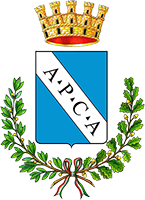OF ST. MONICA

OF ST. MONICA
This church, which is dedicated to the mother of St Augustine, belonged to the adjacent convent of the Augustinian nuns, who administrated it. Its construction dates back to the beginning of the 17th century: the facade remained unfinished, and it displays a brick masonry that should have had a marble or a plaster cladding. On the wall of the lateral entrance vestibule, there is a votive fresco, earlier attributed to Liotardo Piccioli and recently to Tarquinio Racani.
It depicts the Madonna with the Child in glory between angels protecting the city of Amelia (the historical cityscape of Amelia, that appears under the holy scene is very interesting). The internal part of the church has only with one nave: inside a recess on the right side, there is a panel, dated 1642, that represents The Coronation of the Virgin between Saints Nicholas of Tolentino, Thomas of Villanova, Clare of Montefalco and Monica, which is signed by Bartolomeo Barbiani (Montepulciano 1597-1645), an eclectic painter whose style that swings between the later-Mannerism and the Baroque, who left a lot of works of art in the territory between Todi and Amelia. On the high altar, there is a painting attributed, without any certainty, to the painter Andrea Polinori of Todi. It represents The Madonna with the Child between Saints.
The decoration of the vault dates back to the 18th century: the frescoes, representing Angels carrying the symbols of the Augustinian Order, are attributed to Francesco Appiani and his collaborator Luigi Carattoli. They were appointed to execute the frescoes of the nearby church of St. Augustine during those same years (cross reference to panel nr. 13). The technique of trompe-l’oeil (false perspective) used in these frescoes, recalls the one of the false dome painted on the vault of the church of St. Ignatius in Rome, realized in 1685 by the famous Jesuit artist Andrea Pozzo, who is among the biggest exponents of the Baroque painting and of the “Quadraturismo”, a pictorial genre consisting in the realization of squares, that are architectures painted inside a rigorous perspective frame.


